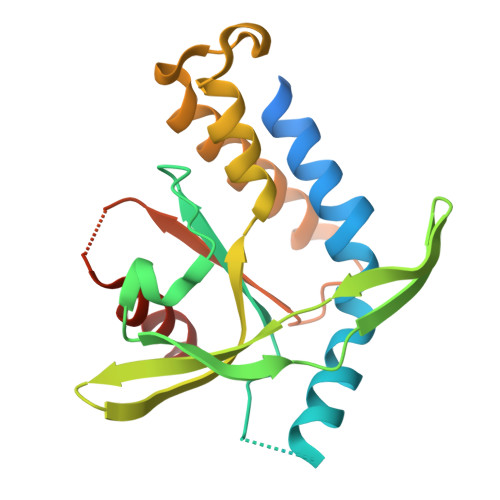Orthosteric STING inhibition elucidates molecular correction of SAVI STING.
Xie, T., Ruzanov, M., Critton, D., Merselis, L., Naglich, J., Sack, J.S., Zhang, P., Xie, C., Tredup, J., Stine, L.B., Messier, C., Hope, D.L., Caceres-Cortes, J., Mueller, L., Dyckman, A.J., Newitt, J.A., Choudhury, A., Wilson, S.C.(2025) Nat Commun 16: 5695-5695
- PubMed: 40595544
- DOI: https://doi.org/10.1038/s41467-025-60632-5
- Primary Citation of Related Structures:
9CUA, 9CUB, 9CUC, 9CUD, 9CUE - PubMed Abstract:
While the progression of STING activators into the clinic has been successful, the discovery and clinical progression of STING inhibitors remain elusive. Questions persist about the molecular properties needed to distinguish between a STING activator and inhibitor, particularly within SAVI disease, a monogenic autoinflammatory disease that renders STING constitutively active, and how different conformations correlate to function. In this work, we use an orthosteric STING activator and inhibitor from the same chemical series to discover that STING M271 is a critical residue for molecular activation that can be leveraged as a unique molecular signature for pharmacological or genetically driven activation and inhibition. Furthermore, we demonstrate how the therapeutic requirements of a molecular corrector of SAVI STING differs from an orthosteric STING inhibitor, and why this is important for the SAVI disease population.
Organizational Affiliation:
Drug Discovery Analytical, Lead Discovery and Optimization, Discovery & Development Sciences, Bristol Myers Squibb, Lawrenceville, NJ, 08648, USA. tao.xie@bms.com.

















